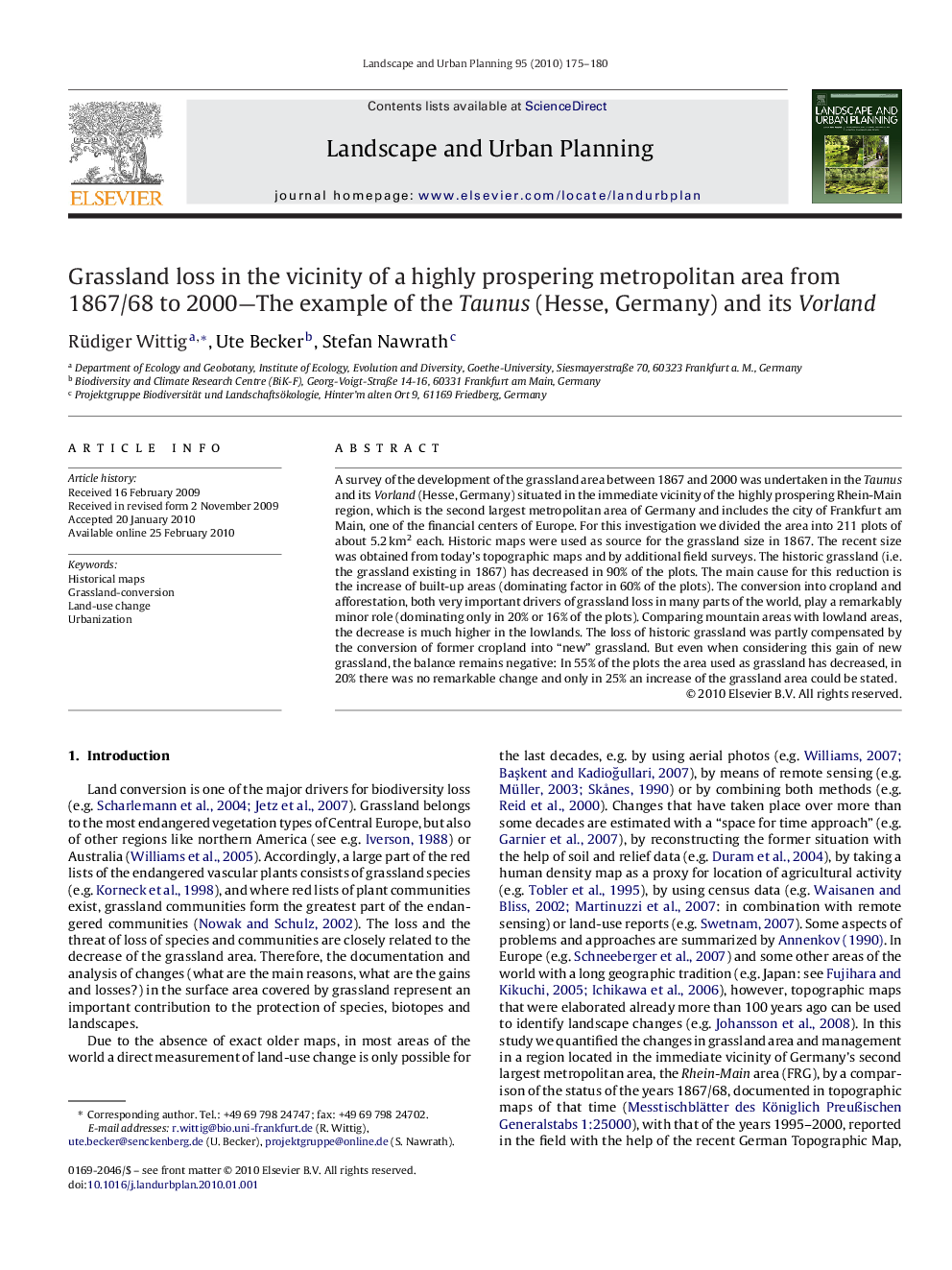| Article ID | Journal | Published Year | Pages | File Type |
|---|---|---|---|---|
| 1050218 | Landscape and Urban Planning | 2010 | 6 Pages |
Abstract
A survey of the development of the grassland area between 1867 and 2000 was undertaken in the Taunus and its Vorland (Hesse, Germany) situated in the immediate vicinity of the highly prospering Rhein-Main region, which is the second largest metropolitan area of Germany and includes the city of Frankfurt am Main, one of the financial centers of Europe. For this investigation we divided the area into 211 plots of about 5.2Â km2 each. Historic maps were used as source for the grassland size in 1867. The recent size was obtained from today's topographic maps and by additional field surveys. The historic grassland (i.e. the grassland existing in 1867) has decreased in 90% of the plots. The main cause for this reduction is the increase of built-up areas (dominating factor in 60% of the plots). The conversion into cropland and afforestation, both very important drivers of grassland loss in many parts of the world, play a remarkably minor role (dominating only in 20% or 16% of the plots). Comparing mountain areas with lowland areas, the decrease is much higher in the lowlands. The loss of historic grassland was partly compensated by the conversion of former cropland into “new” grassland. But even when considering this gain of new grassland, the balance remains negative: In 55% of the plots the area used as grassland has decreased, in 20% there was no remarkable change and only in 25% an increase of the grassland area could be stated.
Related Topics
Life Sciences
Agricultural and Biological Sciences
Ecology, Evolution, Behavior and Systematics
Authors
Rüdiger Wittig, Ute Becker, Stefan Nawrath,
